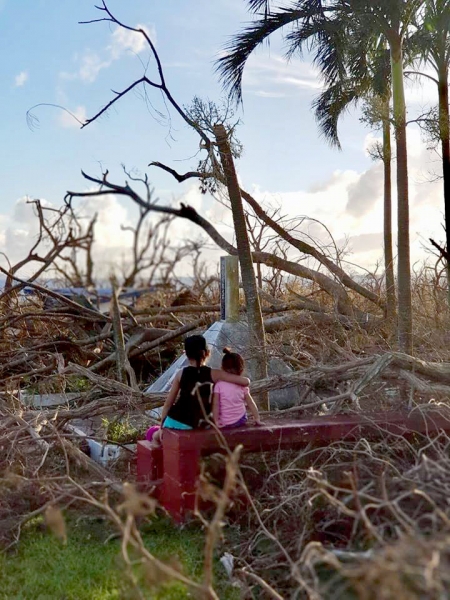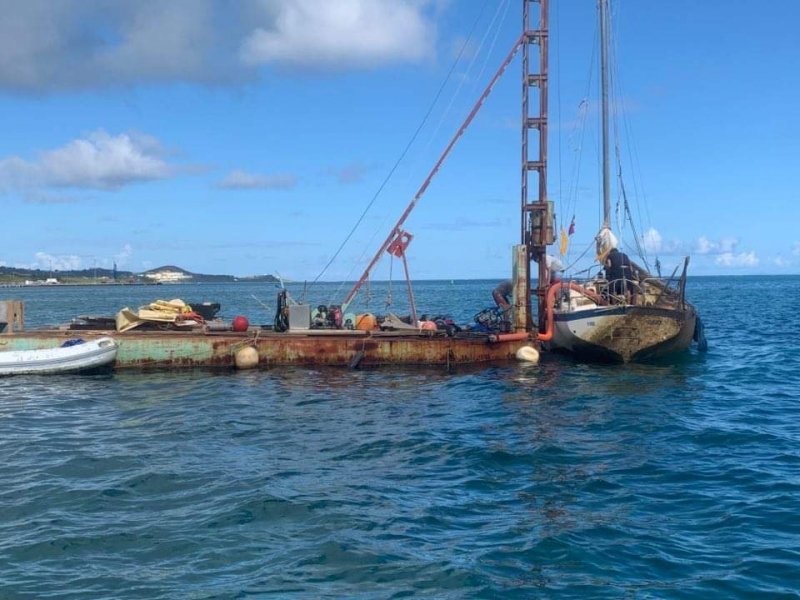Living on a tropical island means access to beautiful beaches and year-round sunny days. For many people this is the definition of paradise. And why not? It appeals to all of the senses. Just imagine having the opportunity to wake up every day to the sound of waves, a myriad shades of blue, and warm, salty breezes…For an islander, there is no place you’d rather be! But what happens when nature shows its other face? The NOAA Marine Debris Program’s Florida and the Caribbean and Pacific Islands Regions include island communities that are uniquely impacted by natural disasters. Tropical islands are highly vulnerable to the impact of hurricanes and typhoons for many reasons, and one dangerous consequence is the amount of marine debris that is generated.

Hurricanes can be seen as a “pressure washer” that gives nature an opportunity to regenerate in their wake. But for humankind, severe weather events can be challenging and deadly. Marine debris represents a hazard for coastal communities, ecosystems, and the economy. The challenges increase on islands with unchecked coastal development, large numbers of boats, and an overreliance on imported food and supplies. Marine debris can come from multiple sources, such as marinas and buildings, and can even come from hurricane relief activities.

Saving human lives is the biggest priority after a natural disaster. Food and water can become scarce due to the loss of local agriculture on an island, temporary port closures, flooding, which contaminates water sources, and the damage to infrastructure that supports essential services. This might mean months of limited provisions, in which single-use plastics replace everyday items as a response to sanitary and logistical challenges. For example, millions of plastic water bottles were distributed after Hurricane Maria in Puerto Rico when access to potable water became scarce. The trash generated by these relief activities can contribute to the already large amounts of marine debris resulting from the immediate disaster, such as displaced vessels, collapsed structures, and derelict fishing gear.
Hurricane related marine debris removal can take years to complete and is costly, especially on small islands where trash might be exported because landfill space is limited. In addition, an island may lack the resources to remove marine debris.
In order to reduce these impacts from severe storms and hurricanes, the NOAA Marine Debris Program provides tools to better prepare and respond:
- Marine Debris Emergency Response Guides – These resources outline existing response structures at the local, state, and federal levels, capturing all relevant responsibilities and existing procedures into one guidance document for easy reference.
- Storm Preparedness Tips (English & Spanish) – This document runs through some basic steps to prepare for storms and prevent your property from becoming marine debris.
- Regional Coordinators - Learn more about the emergency response plans in your area and how your NOAA Marine Debris Program regional coordinator can help.
- Funding- The NOAA Marine Debris Program offers several nationwide, competitive funding opportunities for marine debris removal, prevention, and research. Disaster relief funding may become available to support states and territories in the wake of an event.
When you understand your risk, you are more apt to know how to prepare. The best way to be prepared for this year’s hurricane season is to understand how these events can affect where you live and work. By utilizing the resources provided by the NOAA Marine Debris Program, visiting the National Hurricane Center website, and thinking like an “islander,” you are one step closer to being hurricane ready.

excellent format, easy to read and understand, great for educational purpose.